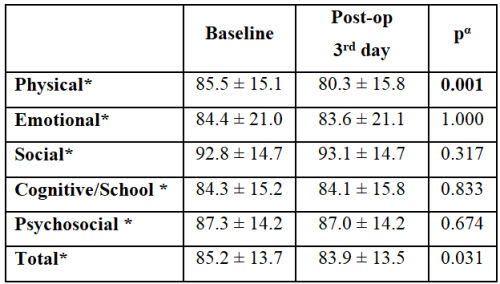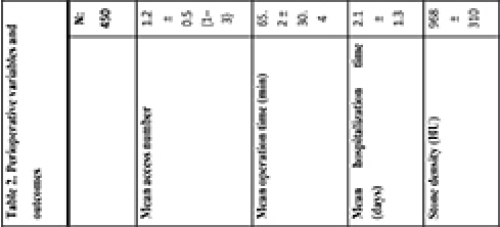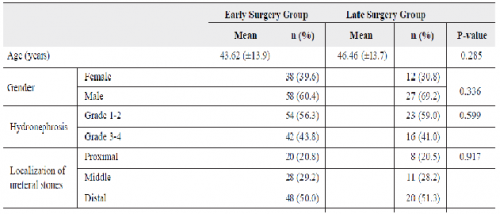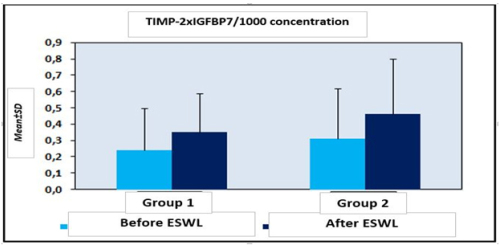Objective: To investigate the effect of ureterorenoscopic stone removal timing on kidney function in unilateral ureteral stones.
Materials and Methods: Hundred and eighty-seven patients included in the study were divided into two groups: 98 patients who underwent surgery
≤14 days after the stone diagnosis constituted the Early Surgery Group and 39 patients who were operated >14 days after the stone diagnosis comprised
the Late Surgery Group. Preoperative serum levels of creatinine, blood urea nitrogen (BUN), and glomerular filtration rates (GFR) were recorded for
the patients in both groups. In the postoperative first month, serum creatinine, BUN, and GFR were again recorded and compared with the preoperative
values.
Results: The mean preoperative serum creatinine, GFR, and BUN levels in the Early Surgery Group were 1.25 ± 0.65μmol/L, 80.04 ± 33.6ml/min/1.73m2,
and 50 ± 16.6mmol/L, respectively. A decrease was observed in serum creatinine (0.82 ± 0.22μmol/L, p< 0.001) and BUN (14.08 ± 7.25mmol/L, p<
0.001) levels one month after surgery, whereas GFR increased (105.33 ± 21.6ml/min/1.73m2, p< 0.001). In the Late Surgery Group, postoperative levels
of serum creatinine (0.94 ± 0.33 vs. 0.95 ± 0.30μmol/L, p= 0.102), and BUN (17.38 ± 9 vs. 17.92 ± 8.8mmol/L, p= 0.283), increased minimally, also a
minimal decrease was observed in GFR (95.15 ± 27.3 vs. 93.77 ± 24.3ml/min/1.73m2, p= 0.338) without any statistically significant difference.
Conclusion: We believe that surgical treatment should be planned within two weeks at the latest, as prolonged obstruction may result in kidney damage.




